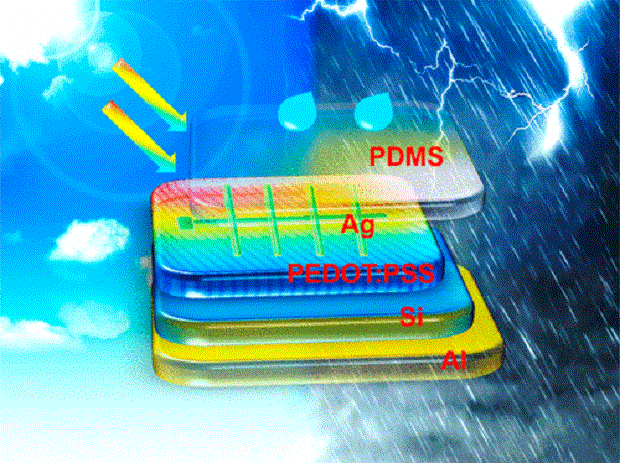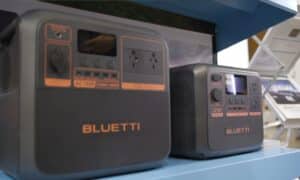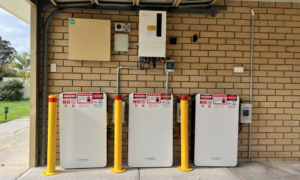Critics of solar energy like to point out a fundamental flaw in photovoltaic technology: it doesn’t work in the rain. But now a team of Chinese researchers have created a solar cell that harvests energy from raindrops. The hybrid device works by collecting spare electrons from falling droplets of water so it derives solar energy AND rain energy.
It does this by utilising the triboelectric effect: the creation of electric charge as water or air disturbs a surface.
Triboelectricity is often associated with wind energy technology. It is seen as a promising area of research in the field of biomimetics – mimicking natural processes with artificial means.
Compared to the output from traditional solar panels, this charge is relatively small. But with improvements, the researchers say it could offset performance loss from solar panels on rainy days.
Generating solar power in the rain

The team from Soochow University built a sandwich-style device incorporating a top layer of triboelectric nanogenerators (TENGs), with a PV solar cell. A transparent electrode between the layers allows sunlight to pass freely to the solar cell below.
Because the TENG and electrode layers are clear, the base solar cell operates at close to standard efficiency. But falling raindrops create static friction, which generates additional voltage, boosting the device’s energy output.
By etching microscopic grooves into the surface of the top triboelectric layer and electrode, the researchers found they could also trap more sunlight and improve raindrop interactions.
In testing, the solar cell demonstrated a power conversion efficiency of 13.6 per cent. Then the team used simulated rainfall to test the output from the nanogenerating layers. Water drops falling at a rate of one per second from five centimetres up generated 2.14 volts of electricity.
Rain energy: Rainy day solar could roll out in 3-5 years
The amount of power the device generates from falling rain is too low to revolutionise the solar industry anytime soon. But researchers say a prototype capable of producing hundreds of volts could be available in 3-5 years.
A significant application could be the weaving of rain-harvesting solar devices into clothing.
In the meantime, households must make do with tried-and-tested rooftop and ground mount solar panels.












































